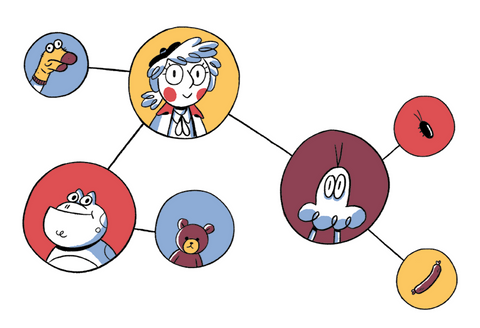Leadership, but turned on its head!
Servant leadership refers to the type of leader that dedicates themselves to serving their team. Hence the name.
Sometimes called conscious or facilitative leadership, this fascinating approach really does turn most of what we understand about leadership frameworks upside down.
How does servant leadership work?
A servant leader does not do their employees’ work for them. But they do do everything in their power to set their team up for success. And their success is your success!
That means empowering your people, supporting their development, looking out for their wellbeing and even encouraging them to develop their own leadership skills.
For example, you’ll spend a lot of your time mapping out opportunities for your team:
- That new project coming up? You’ll be helping your team decide whose development will benefit the most from taking it on.
- Budget time? You’ll be ensuring you get enough for as many resources (people, software, training) as possible to help supercharge your team.
- Disagreements between your employees, or between them and another team? You’ll help protect them from unreasonable outcomes and guide them to a mutually beneficial compromise.
Other frameworks are concerned with who makes the decisions, but that can be largely up to you in this case. You can either collaborate with your team on decision making, or you can call the shots - provided you do so in the best interests of your team.
Empathy, active listening and a strategic mind are required to pull this approach off effectively. In order to ensure everyone on the team is meeting their full potential and that their efforts are all being put towards reaching your team’s goals, you need to have a detailed knowledge of the people on your team - as well as their skills and weaknesses. You’ll also need to be a strong advocate for your employees.
And if something goes wrong? Well, while individual accountability is crucial for any healthy team, your role will include standing between your employees and any negative outcomes beyond what is required for them to learn and improve.
When is servant leadership effective?
This leadership approach works best in organisations where leaders do not have a demanding operational role. That means that they are largely responsible for managing and leading their team, rather than carrying out a lot of their own tasks and work items.
You’ll also need to have a small enough team to know each person relatively well. But not too small! If you’re dedicating your time to serving just two people, you’re probably overdoing it… and they’ll feel micromanaged!
Of course, if you have quite a bit of operational work but only one employee, you can also make use of this approach!
Pros and cons of servant leadership
- Pros: helps teams reach their full potential, nurtures people to develop their skills.
- Cons: only effective in a small number of contexts, risks coming across as micromanagement, can result in a lack of authority when tough calls need to be made.
Is servant leadership right for me?
Honestly, there are limited benefits to this approach unless you’re in the perfect context. But if you are, then yes, it can be a great framework!
And even if your context isn’t perfect, you can borrow some really great approaches from servant leaders. To pull it off, you’ll want to make sure you have the following:
- Psychological safety - magic happens when your team knows that there is no punishment for making an honest mistake.
- Accountability - your own, and your team’s - is vital for a supportive workplace.
- Communication - great daily communication, but also meaningful one-to-one meetings, will help you stay on top of all the information you need to serve your team effectively.
How does servant leadership compare to other leadership styles?
This framework is one of the most employee-centric, selfless approaches you can apply to your leadership practice. It's not dissimilar to coaching leadership, too. Take a look at How to lead: 11 leadership styles and frameworks to see how it compares to other approaches.
Top tip: situational leadership is the most powerful approach, because it includes elements from each of the other frameworks. Including this one!









